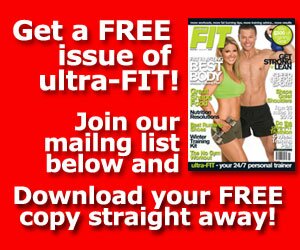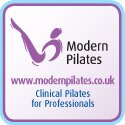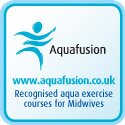Cardio. CV. Aerobics. Energy system work. So many names for the same thing! And with so many cardio options available, it’s tough to decide which method is best. Much of what is written about cardio exercise is biased towards one approach or another and is often based on the authors’ preference and back ground. In this article I’d like to provide you with an independent view of cardiovascular training so that you can make an educated choice as to which method is best suited to your goals.
What is cardiovascular exercise?
For exercise to be truly considered cardio, it should consist of steady-state activity which uses large muscle groups in a rhythmical manner and elevates your heart rate to somewhere between 60-90% of your maximum heart rate. Generally, activities such as jogging, running, power walking, cycling, swimming, group exercise classes, rowing, and using a skipping rope are the mainstay of aerobic activities but ultimately, any activity which significantly elevates the heart rate for an extended period of time can be considered aerobic training. To be honest, the modality used makes very little difference and you should choose the one you like most/dislike least!
How hard?
Cardio training is normally performed for an extended period of time so it’s important to choose an exercise intensity that is hard enough to be beneficial but not so hard that it becomes necessary to stop. It is generally accepted that the benefits of aerobic exercise are gained from working at between 60-90% of an individual’s maximum heart rate (MHR) and many people rely on monitoring their heart rates as an indicator of exercise intensity. You can calculate your Heart Rate Training Zone (HRZ) by performing the following calculations…
Simple Karvonen Theory
220 – your age in years x 60%
220 – your age in years x 90%
e.g. HRZ for a 40 year old
220 – 40 = 180 x 60% = 108 bpm
220 – 40 = 180 x 90% = 162 bpm
Heart Rate Reserve (takes into account elevated fitness levels associated with a lower resting heart rate)
220 – age in years – resting heart rate x 60% + resting heart rate
220 – age in years – resting heart rate x 90% + resting heart rate
e.g. HRZ for a 40 year old with a resting heart rate of 60 bpm
220 – 40 = 180 – 60 = 120 x 60% = 72 + 60 = 132 bpm
220 – 40 = 180 – 60 = 120 x 90% = 108 + 60 = 168 bpm
These numbers represent the lower and upper range of your HRZ. Going below 60% will essentially negate many of the benefits of exercise as it will be too easy where as going above 90% will take you into the anaerobic zone where lactic acid will start to rise and you’ll be forced to slow down and stop…and it hurts too! We’ll look and anaerobic training later though as it’s a very useful exercise tool. To keep an eye on your heart rate while exercise you have a number of options available…you can use a heart rate monitor, you can take your pulse manually at either your wrist (radial pulse) of at your neck (carotid pulse) or, if using gym-based cardio equipment, many machines have built in hand sensors which measure your heart rate although some are more accurate than others.
However, the calculations above are not infallible – some people don’t fit into either of these systems and may find that their HRZ makes exercise either too easy or too hard. Luckily there are a couple of other methods we can use to monitor exercise intensity…
The Rate of Perceived Exertion Scale
The Rate of Perceived Exertion Scale (RPE for short) was designed in the 1960s by Gunnar Borg – a Scandinavian exercise expert. He devised a scale with which to prescribe aerobic exercise to his athletes based on how they felt while training. The original RPE scale went from 6 (absolute rest/inactivity) to 20 (maximum exercise intensity). Why a scale of 6 – 20? Borg’s athletes had an average resting heart rate of 60 bpm and an average maximum heart rate of 200 bpm so he just knocked of a zero. It was found that, with some practice, it was possible to estimate how hard an athlete was working based on how they felt and this corresponded quite accurately to their corresponding heart rates. For many people, the classic 6 – 20 scale is a little awkward to use so it has been simplified and adapted to suit the general exerciser…
- 1. Inactive/at rest
- 2. –
- 3. Very light
- 4. –
- 5. Moderate
- 6. –
- 7. Heavy
- 8. –
- 9. Very heavy
- 10. Maximum
As a general rule of thumb, steady state cardio should be performed at an RPE of 4 – 7 for maximum benefit. Exercise below this level won’t cause much in the way of fitness or health benefits and above will mean approaching the anaerobic zone.
The Talk Test
Our final method for assessing exercise intensity is the talk test. Quite simply, while exercising in your aerobic HRZ you should be able to hold a conversation with regular pauses for breath every couple of sentences. If you can only manage single word responses then it’s likely you are working too hard and if you can manage whole paragraphs without pausing for breath then you’re probably not working hard enough. Combine RPE with the talk test and you should have no problem making sure you are working at the correct intensity to get the maximum benefits from your exercise.
How long? How often?
The American College of Sports Medicine (ACSM) recommends 3 bouts of cardio exercise per week for a minimum of 20 minutes per session at between 60-90% of MHR to a) improve fitness and b) reduce mortality. Doing more is not necessary for health purposes but if performance enhancement (elevated fitness levels) is your goal then increased frequency and duration are likely to be necessary. Even rust-stained iron pumpers should make sure they get their 20 minutes 3 times a week for protect themselves from the likes of CHD and other diseases of the cardiorespiratory system.
Popularity: 6% [?]










